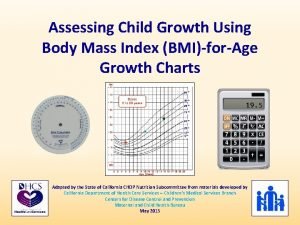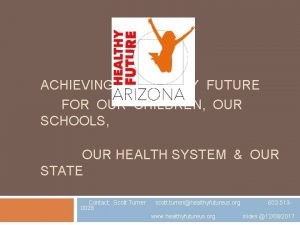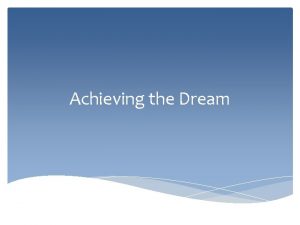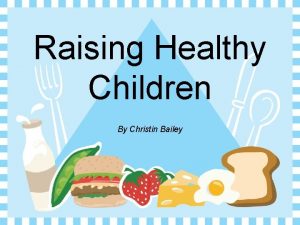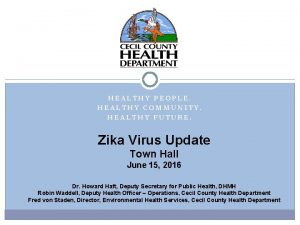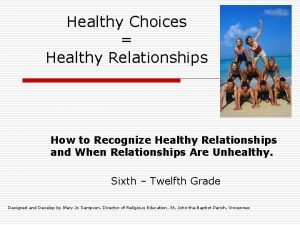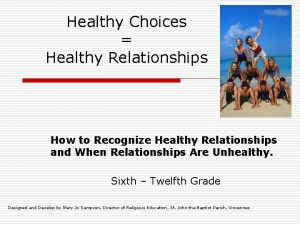ACHIEVING A HEALTHY FUTURE FOR OUR CHILDREN OUR
















![Healthy Future Arizona Initiative Overview discussion draft slide version @06/14/2017 17 Working title (501(c)(3))] Healthy Future Arizona Initiative Overview discussion draft slide version @06/14/2017 17 Working title (501(c)(3))]](https://slidetodoc.com/presentation_image_h2/92512251fd19f39887150d954c8d21b8/image-17.jpg)

- Slides: 18

ACHIEVING A HEALTHY FUTURE FOR OUR CHILDREN, OUR SCHOOLS & OUR STATE Contact: Scott Turner -0028 scott. turner@edunuity. org 602 -513 06/14/2017

HFA Coalition 2 Healthy Future US/Arizona Education, health, public-private, statewide coalition to dramatically improve health in AZ Scott Turner, CEO & Co-founder, Ph. D, MA, MBA. Business exec, 30 years; giving back pro bono last 7 years; Board, Social Venture Partners Arizona; Board, Arizona Business & Education Coalition (ABEC); ADHS Az. HIP Obesity & School Workgroups Arizona Health & Physical Education AZHPE, established 1931, is Arizona affiliate of SHAPE America (the national Society of Health And Physical Educators) Close to 1000 members, representing ~2600 certified physical & health educators of AZ Hans van der Mars, Ph. D. Professor & Program Director, PE Teacher Ed & MPE Programs, ASU; AZHPE Director of Advocacy; >60 papers/book chapters/textbooks; Boards, SHAPE America & President’s Council on Fitness, Sport & Nutrition Science Empower Youth Health Program (EYHP) Highly effective, nationally recognized program that substantially improves PE, PA, fitness, nutrition ed @$10/student/year EYH State Leadership team: Jason Gillette, Chief, Office of Tobacco Prevention, Cessation & Secondhand Smoke, ADHS; former School Health Director, ADE (3 years); Board of Directors, Arizona Public Health Association. Jen Reeves, MEd. Associate Research Scientist, Uof. A (18 years): >$200 M in grants; Principal Investigator, EYH; former PE teacher, Avondale, Tucson (20 years); Spanish-speaking; national SHAPE America Award Keri Schoeff, Physical Education/Physical Activity Coordinator, ADE (5 years); former PE Teacher, Dysart USD; Glendale Union HSD (14 years) Scott Turner Note: PA=physical activity Slide @02/20/2017

3 HFA Coalition (cont’d) Stanfield ESD Leadership Very low-income rural school district with no M&O override, yet national leader in increasing physical activity & healthy nutrition & integrating health in standards-based curriculum; first AZ school: USDA Healthier US Schools Challenge Gold w/Distinction Award Melissa Sadorf, Superintendent, Ed. D. All Arizona Superintendent of the Year for Small Size Districts; AZ Middle Level Principal of Year; https: //vimeo. com/200605985 Chris Lineberry, Principal, Ed. D. Co-author, Recess Was My Favorite Subject: Where Did It Go? ; Co-Founder, Core Purpose Consulting; http: //www. raisingarizonakids. com/2014/07/chris-lineberry-putting-kids-first/ Pinnacle Prevention Public health consulting, training, and technical assistance with emphasis in healthy eating and active living Adrienne Udarbe, Executive Director, MS, RDN. Former Community Programs Manager, ADHS; Nutritionist, Amer. ican Red Cross NAU Dept. of Health Sciences (Fit Kids of Northern Arizona /Northern Arizona Healthcare (NAH)) NAH-funded physical activity & healthy habits education programs for over 10, 000 students in more than 20 schools in northern AZ. Dirk De. Heer, Assoc. Professor, Dept. of Health Sciences, NAU. Research & evaluation focused on communitybased physical activity & health promotion programs for high-risk populations & integrating these programs into health care systems American Academy of Pediatrics, Arizona Chapter (Az. AAP) Committed to improving the health of Arizona children and supporting the pediatric professionals who care for them. Note: PA=physical activity Slide @06/05/2017 Anne Stafford, Executive Director. Formerly ED of Community Health Charities, Arizona Market.

AZ Stakeholder Input from: 4 Superintendents/Arizona School Administrators (ASA) Debbi Burdick, Calvin Baker*, Deb Duvall, Roger Freeman, Chad Gestson, Betsy Hargrove*, Mark Joraanstad, Melissa Sadorf, Jeff Smith, Paul Stanton*, Paul Tighe* AZ School Boards Association (ASBA), AEA, AZ Health & Physical Education (AZHPE), SHAPE America, FTF Carly Braxton, Steve Jeffries, Chris Kotterman*, Paul Kulpinski*, Matt Mixer, Andrew Morrill*, Tim Ogle*, Trish Robinson, Keri Schoeff, Hans van der Mars Arizona State Board of Education (SBE) (& SBE’s A-F School Accountability Ad Hoc Advisory Committee) Calvin Baker*, Reg Ballantyne, Tim Carter, Roger Jacks, Janice Mak*, J. D. Rottweiler*, Chuck Schmidt*, Karol Schmidt*, Jared Taylor*, Tom Tyree; (A-F: April Coleman*, Whitney Chapa*, Michael Henderson*, Mitra Khazai*, Foster Leaf*, Paul Tighe*) Nonprofits/NGOs/Misc. (Afor. AZ, ABEC, AHA, AZ Chamber, AZ for Recess, CAA, CFA, EMA, Fit Kids, GS, GPL, Goldwater, MA, Playworks, SALC, SVPAZ, Tri. Adv. ) Amanda Burke, Ernie Calderon, Terri Wogan Calderon, Ellis Carter*, Whitney Chapa*, Patrick Contrades, Christine Davis, Pearl Chang Esau, Dick Foreman, Sybil Francis, Mike Gardner, Neil Giuliano, Stuart Goodman, Becky Hill*, Lisa Graham Keegan, Bert Mc. Kinnon, Jaime Molera, Dana Wolfe Naimark, Nicole Olmstead, John Pedicone*, Brandy Petrone, Jon Ragan, Paul Shoemaker, Marissa Theisen, Adrienne Udarbe, Chuck Warshaver, Jim Zaharis Health Care Providers & Plans (AHIP, Az. AAP, Az. AHP (AHCCCS), Az. HAA, Banner, BCBSAZ, HSAA (Alliance), Mercy Care/MMIC/Aetna, Tenet/Abrazo, United HC) Tony Astorga, Reg Ballantyne, Chuck Bassett, Jason Besozo*, Jennifer Carusetta, David Childers, Mark Fisher, Tad Gary, Joe Gaudio, Deb Gullett, Suzanne Hensing, Debbie Hillman, Christi Lundeen, Andy Kramer Petersen*, Anne Stafford, Karrie Steving, Trisha Stuart, Deborah Fernadez-Turner, Greg Vigdor Governor’s Office (including GOYFF) Kirk Adams*, Christina Corieri, Governor Ducey*, Katie Fischer, Debbie Moak, Danny Seiden*, Kristine Fire. Thunder, Dawn Wallace State Agencies (ACA, ADE, ADHS, AHCCCS) AZ Commerce Authority*, ADE (AZ Department of Education): School Health/PE, ADHS (AZ Dept. of Health Services): Az. HIP Obesity & Cross-Cutting Strategies/School Health Workgroups & BNPA, AHCCCS* Legislators & Legislative Staff Sylvia Allen, Catcher Baden, Nancy Barto, David Bradley, Kate Brophy-Mc. Gee, Paul Boyer, Heather Carter, Regina Cobb, Randall Friese, Gail Griffin, Katie Hobbs, Michael Hunter, Jay Lawrence, Debbie Lesko, Emily Mercado, JD Mesnard*, Lynne Pancrazi, Frank Pratt, Jesus Rubalcava, TJ Shope, Matt Simon, Steve Smith, Reed Spangler, Melissa Taylor, Kelly Townsend*, Bob Worsley, Steve Yarbrough*, Kimberly Yee* Foundations/Grantmakers (Arizona Community Foundation/ACF, AGF, AZSTA, BHHS Legacy, Helios, Piper, Rodel, United Way); Others Jacky Alling, Carlyle Begay, Don Budinger, Shelley Cohn, Robbin Coulon, Kim Covington, Jeff Dial, Charles Hokanson, Kimberly Kur, Robin Lea-Amos, Laurie Liles, Jackie Norton, Janice Palmer, Sue Pepin, Marilee Dal Pra, Suzanne Pfister, Roy Pringle, Steve Seleznow, Brian Spicker, Penny Allee Taylor, Mary Thomson, Merl Waschler, Glenn Wike, Jerry Wissink, Vince Yanez Higher Education/Research Tacy Ashby(GCU), Chuck Corbin(ASU), Dirk De. Heer(NAU), Kimberly La. Prade(GCU), Melanie Logue(GCU), Teri Pipe*(ASU), Jennifer Reeves(Uof. A),

Action Agenda 5 • Unsustainable health crisis long-term education & business/economic crises • 1 st stage solution – K-12 physical & health “preventive education” • It’s good for student achievement & engagement • And a rapid payback & great ROI for health organizations • How get there? – Nonprofit leadership: Healthy Future Arizona initiative: coalition, org. capacity – K-12 capacity-building: EYH Program, >Recess, Fit Kids Program – K-12 accountability: A-F School Grading, School Report Cards, School Wellness Policy/SHI, Fitness. Gram assessments, Nutrition/CDC surveys, TBD – AZ Co-invest & Scale-up: Private-public pay-for-performance: health orgs, govt. ; via HFA • Long-term goals – $300 -500 M/year in new $$ from health sector into K-12 in AZ – Reverse child obesity, diabetes, epidemic trends in AZ, SHI=School USA Health Index (wellness Note: ROI=return on chronic investment; A-F=A-F School Accountability formula; policy plan); EYHP=Empower Youth Health Program; HFA=Healthy Future Arizona. Slide @06/11/2017

Health Sector Win-Win (or else) 6 • Health Organizations Provide: – Investing in evidence-based, behavior-changing physical & health education • Health Organizations Receive: – Short-term: year Better child health + Lower child health costs – Longer-term: Better adult health + Lower adult health costs @ @ Payback <1 ROI >100 x • Or Else -- If Continue on Current Path: With > half of children headed for life of early diabetes & other chronic conditions + related adult health costs of >$10 K-15 K/person/year Ever-worsening cost pressures & financial Notes: Early diabetes = the early onset of Type 2 diabetes, due to unhealthy behavior starting in childhood. Annualmedical expenditures per nonelderly (agesviability 18 -64) adult enrolleerisks in Medicaid, 2009: No chronic conditions=$4, 342/year; CVD (cardiovascular disease)=$9, 414/year; Diabetes=$13, 313/year; after out-of-pocket costs. References: Kaiser Family Foundation, 2012: The Role of Medicaid for Adults with Chronic Illnesses / Cardiovascular Diseases. Chronic conditions = vast majority of Medicaid costs: http: //www. gallup. com/poll/161615/preventable-chronic-conditions-plague-medicaid-population. aspx

MVPA: Payback <1 Year rapid ROI from health sector investment in moderate-to-vigorous physical activity 7 @$10/child/year (cost at-scale) Health Treatment Prevalenc Reduce Grade Average Condition Cost e d Levels Reduced with Most (per treated (% students Inciden Health Cost student/year) ce Reduced with per condition) Costs (% drop in students with condition) Student/Year (all students) Asthma, ADHD, Roughly Obesity, Notes: High levels of MVPA (moderate-to-vigorous physical activity) reduce health costs by est. $30 -50/child/year. Evidence-based Empower Youth Health $400 spread Program (EYHP) preventive “ed-vaccination” plans for, trains, and assesses to ensure high levels of MVPA @scale cost of $10/student/year = <1 year payback. Depression/Oth 5 -24% 14 -33% $30 -50 EYHP costs per student are higher at smaller scales: ~$15 -30/student/year. It often only takes ~1 -2 children per class. Kbecoming healthier to pay back EYHP across 1500 investment within 1 year. Payback/ROI formula: Condition Cost x Condition Prevalence x Reduced Incidence of Condition = Treatment Cost er Behavioral Reduction per Average Student (across all students). K-12: Kindergarten through 12 th grade. ADHD: attention 12 deficit/hyperactivity disorder. BH: behavioral/mental Health health. MS: middle school. HS: high school. MVPA is key to improving many of these conditions: MVPA=e. g. , afterseveral minutes of MVPA, children are panting, starting to sweat, & having trouble conversing while moving. Target total of 60 minutes/day of MVPA from before, during and after school activities. Utilized peer-reviewed journal articles, when available, and also population data from government statistics/reports. ADHD & depression can improve particularly quickly, though BMI has been improving within 1 -2 years in both EYH and Fit Kids. Reduced incidence of obesity estimated based on reduced obesity compared to what would have been expected in that sociodemographic population at those ages. Longer-term ROI = >100 x, as health condition on-set is delayed or averted & the severity in middle age & later is postponed and reduced. Rapid paybackat all grade levels by particularly reducing: Elementary: ADHD, asthma; MS: ADHD, misc. ; HS: obesity, depression/BH. ADHD & depression costs vary dramatically based on type of treatment, and can be much higher. Also, EYH payback/ROI is estimated based on changes in the 78% of students now in the Healthy Fitness Zone (HFZ); however, the 22% non-HFZ obesity rates did not likely improve as much. There is some possible double-counting of teen obesity/depression/BH savings, since obesity costs can include some depression/BH costs. Class size assumption: 30 -35 students. References include: Domino et al, 2009; Fullerton et al, 2012; Hampl et al, 2007; Katz et al, 2010; Kuhle et al, 2011; MACPAC, 2015; Pelham et al, 2007; Schuch et al, 2016; Skinner et al, 2016; Thapar et al, 2012; Wang et al, 2005. Also, per. Yamamoto, 2013:

Preventive Power of Physical Activity “Doses” 8 evidence-based rapid payback during childhood from MVPA Conditio n Asthma ADHD Obesity Treatment Cost Prevalence Reduced Incidence Grade Levels w/ Most Reduced Costs $400 (Wang et al, 2005) 6% (Wang et al, 2005) 14% (Katz, Cushman et al, 2010) Elementary, MS $1, 000 -$1, 500 (CDC, 2016; Fullerton et al, 2012; Pelham et al, 2007) 7 -9% (Wolraich et al (CDC), 2012/2014; MACPAC, 2015) 33% (Katz, Cushman et al, 2010) Elementary, [MS] $600 (Buescher et al, 2008; Hampl et al, 2007; Kuhle et al, 2011) 12 -24% (De. Heer, 2014; Reeves, 2016; YRBS - AZ, 2013) 10 -20% [MS], HS (De. Heer, 2014; Reeves, 2016; Skinner et al, 2016; Edunuity Notes: MVPA = moderate-to-vigorous physical activity. ADHD: attention deficit/hyperactivity disorder. est. )BH: behavioral/mental health. [MS]: moderate cost reduction among middle school students. HS: high school. More Notes & References: see other Payback Details slides. Slide@02/02/2017. Depression/ $700 3 -5% (MACPAC, 26 -33% (Shuch et al, 2016) [MS], HS References: Buescher, Whitmire, Plescia, 2008: Relationship Between Body Mass Index & Medical Care Expenditures for North Carolina Adolescents Enrolled BH (Domino et al, 2009) 2015; Thapar et al, in Medicaid in 2004. 2012) De. Heer, 2014: Fit Kids at School: Executive Report. Domino, Burns, Mario, et al, 2009: Service Use and Costs of Care for Depressed Adolescents: Who Uses and Who Pays? Fullerton, Epstein, Frank, Normand, Fu, Mc. Guire, 2012: Medication Use and Spending Trends Among Children With ADHD in Florida’s Medicaid Program, 1996 -2005 Hampl, Carroll, Simon, Sharma, 2007: Resource Utilization and Expenditures for Overweight and Obese Children. Katz, Cushman, Reynolds, et al, 2010: Putting Physical Activity Where It Fits in the School Day: Preliminary Results of the ABC (Activity Bursts in the Classroom) for Fitness Program. Kuhle, Kirk, Ohinmaa, et al, 2011: Use and cost of health service among overweight and obese Canadian children. MACPAC, 2015: Behavioral Health in the Medicaid Program—People, Use, and Expenditures. Pelham, Foster, Robb, 2007: The Economic Impact of Attention-Deficit/Hyperactivity Disorder in Children and Adolescents. Reeves, 2016: US Department of Education Grant Performance Report (ED 524 B) (report on early Empower Youth Health & related elements).

EYHP: Evidence-based MVPA Program 9 much better outcomes from more moderate-to-vigorous physical activity @$10/student/year Notes: $10/child/year cost at-scale of 50 K-100 K students/year. Empower Youth Health Program (EYHP) results 2012 -2015 from lower-income AZ schools with 79 -98% FRL (Free & Reduced Lunch) student population; 90% Hispanic, 5% Native-American, 3% White, 2% African-American. By Year 3: 20 schools in EYHP, 16, 000 students, Sunnyside USD, Tucson; increased % students with cardio-vascular aerobic fitness 4 x from 17% to 78%; >6 x increase in % of students with good nutrition: 11% 73% consuming recommended fruit & vegetable servings; % of students at normal weight increased by 12. 5% from 48% to 54% among students in the Healthy Fitness Zone (HFZ), even though students would typically be increasing BMI and becoming more obese as they age; 35 -40% of students receiving 60+ mins. PA/day. Healthy Fitness Zone is the national Fitness. Gram/PYFP standard for fitness, as measured by objective aerobic capacity (PACER), BMI, & muscular strength & endurance metrics. EYHP costs $10/student/year at scale (produce costs may be additional). References: Reeves, 2016: US Department of Education Grant Performance Report (ED 524 B): Jennifer Reeves, Uof. A, Principal Investigator; fall 2012 - spring 2015. Other notes/references: EYHP costs kept low by: school-wide wellness policy planning; training existing PE & classroom teachers & MS/HS student fitness volunteers (& not adding more staff); and regular assessment with Fitness. Gram. Moderate-to-vigorous physical activity (MVPA) & healthy nutrition increase brain capacity & academic achievement, per extensive research evidence. Teen aerobic fitness is correlated with 35% less heart attacks in middle-age (Hogstrom, Nordstrom, 2014); reducing % of Medicaid enrollees with CVD by 35% would save $50 B/year nationally (Kaiser Family Foundation, 2012). Teen fitness correlated with 1/2 - 2/3 less risk of type 2 diabetes in middle-age (Crump et al, 2016). Potential to reduce chronic health conditions & costs by 20+% with 100 x or more ROI (Edunuity estimate). Rapid payback for health sector within first year of EYHP implementation in schools, due to reduced health costs for ADHD, asthma, obesity, depression, and related preventable child health issues (see Payback slides/references). Rationale: as fitness increases & nutrition improves, chronic health conditions decrease, Medicaid/AHCCCS/health insurance & out-of-pocket health costs decrease, & productivity & GDP increase from less

How So Effective @$10/Student/Year? : P-T-A: Plan + Train + Assess 10 Optimizing existing school staff with students, with available PE & recess time*, without added personnel* Plan: Develop Policy/Plan for School-based Health Promotion - Mutually agreed wellness policy plan by staff to improve health: incl. administration, food services, nurse, classroom & PE teachers - Prioritize plan with self-assessment of all school-based health-related elements; complete CDC’s School Health Index (SHI) to identify & reduce health risk behaviors, including addressing gaps & weaknesses Develop Community Partnerships including School Health Advisory Councils (SHAC) - Plan includes before, during, and after school, as well as on weekends, holidays, and vacations (e. g. , parents, school food service vendor, neighborhood associations, community-based organizations (CBO), park and recreation, YMCA’s, afterschool programs, Walking School Bus Programs, local businesses, and more), promoting youth & community physical activity & healthy nutrition etc. ) - SHAC to help improve instructional programs, policies, & support services for the 8 components of a coordinated school health/ WSCC model; meet min. every other month, ensure wellness implementation for students, staff, & community Train: High-quality Standards-based Instruction to optimize Physical/Nutrition/Health Education - Professional development of K-12 teachers, other staff + on-going field support; including training to reach 60 minutes/day of Notes/References: $10/child/year cost at-scale of 50 K-100 K students. WSCC: Wholeclassroom School Whole Community Whole Child model. *Schools with inadequate moderate-to-vigorous physical activity (MVPA during “brain breaks”, recess, PE, pre/post-school) numbers of certified PE teachers &/or low PE & recess minutes can usually fund PE/recess expansion, by re-allocating their existing instructional time & funds back to PE & recess without harming academic performance (Kwak et al. , 2009; Lees & Hopkins, 2013; Rasmussen & Laumann, 2013; RWJF, 2009; Shephard, 1996; Singh et al. , -2012; Trost volunteer & van der Mars, 2010; Trudeau Shephard, 2010; et al); in fact, schools canafter increase academic success with& rigorous Student peer-led physical& & wellness activities before, during, school including lunch recess PE/MVPA (Ahamed et al, 2007: Action School! BC; Castelli et al, 2007 -12; Donnelly et al, 2009: PAAC; Hollar et al, 2010; Kamijo et al, 2011, 2012). Slide Develop Student Leadership

Fit Kids: MVPA Prog. #2 Northern AZ Healthcare investing $1 M/year in schools 11 ● Founded 2012, Flagstaff: ~$1 M/yr from Northern AZ Healthcare ● ~$100/student/yr invested; $60 -70/student/year physical activity program cost (if NAH’s peers invested comparable amount = $100 M+/year new money into AZ schools) ● 20 elementary/middle schools, 5 districts, >9000 students/year ● Mandatory 1 class/week moderate-to-vigorous physical activity (MVPA) & nutrition ed, led by trained Health Aides ● ● Optional before/after/lunch activity sessions ● Supplements existing PE, health education Evaluation = evidence-based: ● 2350 children, 4 x BMI measurements over first 2 years Note: *50% reduction in the incidence of being overweight from what would be expected based upon school district data. Fit Kids physical activity programs in K-8 schools costs approx. $60 -70/student/year, primarily cost of trained health aide to lead physical activity (PA). References : Fit Kids evaluation● reports (De. Heer, 2014)/NAU emails; Fit Kids website: https: //nahealth. com/fit-kids; Fit Kids staff. Google images: vector. me, Signal Outcomes: ~50% reduction in likelihood* of being overweight

Why Educators Support? 12 M-V physical activity (MVPA) improves academics • Reallocating time from PE does not improve achievement – Wilkins et al, 2003; Trudeau & Shephard, 2008 • Keeping/increasing* time allocated to PE/PA does not harm achievement – Kwak et al. , 2009; Lees & Hopkins, 2013; Rasmussen & Laumann, 2013; RWJF, 2009; Shephard, 1996; Singh et al. , 2012; Trost & van der Mars, 2010; Trudeau & Shephard, 2010; USDHHS, 2010 • Regular Physical Activity (PA) throughout day helps academic outcomes – Ahamed et al, 2007: Action School! BC; Donnelly et al, 2009: PAAC; Sallis et al, 1999 • Moderate-to-vigorous PA (MVPA) improves cognitive functioning & academic performance – Fedewa et al. , 2011; Hillman, Castelli et al, 2007 - ; Hollar et al, 2010; Kamijo et al, 2011, 2012; Shephard, 1996 Notes: e. g. , Trudeau & Shephard, 2008: “Given competent providers, [up to 60 minutes*] PA can be added to the school curriculum by taking time from other subjects without risk of hindering student academic achievement. On the other hand, adding time to ‘academic’ or ‘curricular’ subjects by taking time from physical education programs does not enhance grades in these subjects and may be detrimental to health. ” Lees & Hopkins, 2013: systematic review of RCTs: “There was no documentation of APA [aerobic physical activity) having any negative impact on children’s – and Desy et al, 2013; Rumberger, 2011 school curriculum time was reassigned from classroom teaching to aerobic physical cognition psychosocial health, even in cases where • PE, PA, Sports increase engagement & reduce drop-outs

Postponing Diabetes Onset Dramatically Reduces Costs e. g. , pre-diabetes instead of diabetes; or diabetes when elderly not in middle-age; >100 x lifetime payback/ROI for Empower Youth Health Program preventive education Undiscounted lifetime incremental spending 13 $ 300 000 $ 250 000 Child inactivity/ obesity $ 200 000 Active children K-12 $ 150 000 + Follow-on Policies with Adults $ 100 000 $ 50 000 $- Onset Age 30(est) 35(est) 40 45(est) 50 55(est) 60 65 Notes: Lifetime cost varies enormously by age of diabetes onset. Data includes both men and women. References : Zhuo et al, 2014, The Lifetime Cost of Diabetes and Its Implications for Diabetes Prevention: Table 2—Life-years lost to diabetes and lifetime incremental medical spending attributed to diabetes. Sources: Linked data from the 2005– 2008 National Health Interview Survey and the 2006– 2009 Medical Expenditure Panel Survey and from

20 -50% Lower Later-Life Costs 14 Health cost aging curve index 3, 5 3, 0 2, 5 2, 0 1, 5 P • R ostp • D edu onin ec cing g o rea n-s s e sin ve et g c rity os ts 1, 0 0, 5 - Fit Kids postponing chronic condition on-set, reducing adult severity, compared to historical & current trends-due to 13 years effective preventive K-12 PE/health Alternative Scenarios: education • Actual, 2010 (Male) Age 6 9 12 15 18 21 24 27 30 33 36 39 42 45 48 51 54 57 60 63 Shift Costs Down 5 Years: 22% savings Shift Costs Down 10 Years: 36% savings Shift Costs Down 6. 5 Years Tapering toward Actual: 21% savings Current Trends, 2030: 10% more costly Note: Based on relative health care cost in 2010, by age, for nonelderly males in US commercial market, per Society of Actuaries. Preliminary projections estimated very roughly/conceptually: If costs are shifted down by 5 years (in effect, the onset & impact of chronic conditions are postponed & moderated due to prolonged, effective, early intervention K-12), total amount saved for ages 6 -64 is 22%; if shifted down by an average of 10 years, 36% is saved; if shifted down 6. 5 years initially then tapering toward 0 years (i. e. , returning toward current actual costs by age 64), 21% is saved. What is more, if current trends continue, costs in 2030 and 2050 could be 10 -25% more expensive than in 2010 for the same age, since so many individuals will have had very unhealthy behavior from an early age. Per Yamamoto, 2013: significant costs (& savings) can start early in life: “Chronic conditions in the young (under age 30) take a higher relative toll on that population than they do for the older population. For commercial members under 30 identified with cancer or circulatory conditions…their costs were much higher on average. ” Also see Payback slides: EYHP can pay for itself within 1 st year. References: 2010 commercial cost data held by Health Care Cost Institute (HCCI) w/analysis from: Yamamoto, 2013: Health Care Costs—From Birth to Death, sponsored by Society of Actuaries; reduced costs estimated by Edunuity based on research data including

Strategies that Worked vs. Smoking… Yet We Aren’t Doing Now to Promote Physical Activity & Healthy Nutrition 15 [Report Card graded (A-F): if & how well we are re-using strategies that helped reduce smoking] - Broad & profound awareness of seriousness of problem (D) - Strong health-related education programs in schools (D) - Hard-hitting, pervasive public information campaigns (F) - Large insurance premium discounts for healthy behavior (D) - Very strong government health warnings (D) - Cost-effective behavior cessation/adoption products/programs (D) - Government restrictions on unhealthy prod. marketing/promotion (F) Notes: Effective steps we can realistically start taking NOW are bold and/or underlined. Anti-smoking track record: 42% US adults smoked in 1965 17% US adults now. List of key strategies that helped to dramatically reduce smoking among Americans; followed by an ( A-F) grade, indicating Edunuity’s rating of how well AZ & the USA are using the particular strategy to prevent other unhealthy behaviors--particularly lack of physical activity and unhealthy nutrition--and thereby prevent or reduce chronic health conditions. Ranked by Edunuity in rough order of what is realistically implementable & politically achievable starting in 2017. Population-wide K-12 preventive education (“ed-vaccination”) builds a foundation of support for other policies, including by “raising consciousness” of students & their parents about the impact of health-related behavior. *Taxes could be imposed in revenue-neutral/no net new taxes manner; and only after public & political support grows due to greater recognition of dangers & costs from unhealthy behavior. Also, healthier behavior increases productivity, boosts profits & income, & raises GDP, which increases tax revenue without - Dramatically increased unhealthy product sales taxes* (F)

HFA Intermediary Role Ensures Outcomes, ROI 16 - Funders invest via HFA, not directly in schools - HFA implements & assumes responsibility for health outcomes - Pay-for-performance/success: without results, the monies stop INVESTMENT$ FUNDERS Foundations, Others Health Care Providers & Plans Legislatur e, Counties COLLABORATO Health & State & RS Gov. Office, Education Regional ADE, ADHS, AHCCCS HEALTH OUTCOMES School Districts: School Boards, Superintendent s, Staff Associations & Nonprofits Communit y Groups IMPLEMENTERS Medicaid/ CMS Business/ Leadership Orgs. , Foundation s, Others Schools: Principals, Local PE & Classroom teachers, Food Nonprofit services directors, School s, Others nurses, Other school personnel, Parents Discussion draft slide version @05/25/2017
![Healthy Future Arizona Initiative Overview discussion draft slide version 06142017 17 Working title 501c3 Healthy Future Arizona Initiative Overview discussion draft slide version @06/14/2017 17 Working title (501(c)(3))]](https://slidetodoc.com/presentation_image_h2/92512251fd19f39887150d954c8d21b8/image-17.jpg)
Healthy Future Arizona Initiative Overview discussion draft slide version @06/14/2017 17 Working title (501(c)(3))] Org. Status First Priority reduction Healthy Future Arizona (HFA) initiative [affiliated with Healthy Future US Via fiscal sponsorship under Arizona Community Foundation [501(c)(3) pending] Scaling Empower Youth Health Program in AZ (& TBD) to trajectory of >20% in chronic diseases & costs, using school-based approaches (PE/PA, nutrition ed, etc. ) Follow-on of Priorities too Vision Mission sense, Co-develop path to ~50% reduction in chronic diseases & costs; including outside school settings TBD; dramatically improve other aspects of healthy behavior, Arizona becoming the healthiest state (& USA the healthiest country) Empowering individuals to substantially improve their health, in the broadest using school-based & other approaches to develop lifelong healthy behavior Values context “Health” High-integrity, accountable, move-the-needle-systemic, practical + scalable, ROI-evidence-based, pay-for-performance/success, sustainably self-funding, sense of urgency/emergency, in partnership, & in local/community/social Whole-person: physical, cognitive, social-emotional, mental, financial, civic,

Next Steps: HFA Initiative 18 • Short-term Policy Advocacy: – Add PE/HE metrics (in progress): A-F School Grading Formula; School Report Card – Expand recess K-5 (in progress), other whole-child ed TBD: HB 2082 successor, TBD • HFA Capacity Building: $$ for Healthy Future AZ launch incl. staff • Health Sector Funding: Early champions with $$ • EYH Scaling: • ACF/Others: Empower Youth Health Program to 90+ low-income schools Help expand coalition, capacity$$, scaling$$ • Measurable Pay-for-Performance/Success Long-term Goals: $300 M+/yr new money into K-12; $200 M+/yr new state tax revenues; time (First steps: $1 M/yr EYHP scaling to $11 M/yr all-AZ EYHP ASAP) over Slide @06/08/2017
 Future perfect continuous tense example
Future perfect continuous tense example Future perfect simple continuous
Future perfect simple continuous Our census our future
Our census our future Our census our future
Our census our future Our future is in our hands quotes
Our future is in our hands quotes Healthy soil healthy life poster ideas
Healthy soil healthy life poster ideas Healthy forests healthy communities poster contest
Healthy forests healthy communities poster contest Healthy nurse healthy nation
Healthy nurse healthy nation Journal on healthy food healthy mind
Journal on healthy food healthy mind Bmi ranges for children
Bmi ranges for children Future nurse programme
Future nurse programme Future perfect and future continuous
Future perfect and future continuous Perfect future tense
Perfect future tense Future vacation
Future vacation Present continuous in future
Present continuous in future 1 2 3 kondicional u engleskom jeziku
1 2 3 kondicional u engleskom jeziku Tense chart for class 5
Tense chart for class 5 Verbal times
Verbal times Future continuous and future perfect
Future continuous and future perfect









